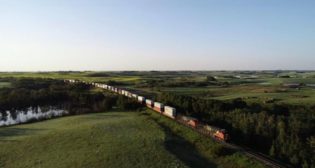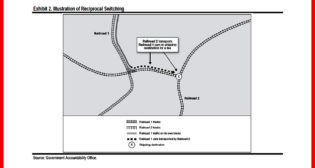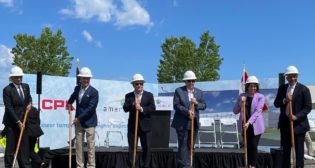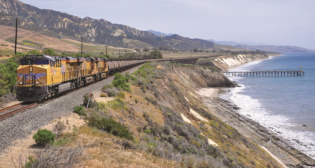
Canadian Pacific’s implementation and use of ATGMS
Written by Mischa Wanek-Libman, Editor, Railway Track & Structures; and Engineering Editor, Railway AgeThe Engineering Services track of the American Railway Engineering and Maintenance-of-Way Association's (AREMA) Annual Conference kicked off with a presentation from Ron Gagne, director track systems, Canadian Pacific (retired), on the railroad's implementation of an autonomous track geometry measurement system (ATGMS).
Canadian Pacific developed the ATGMS with the help of ENSCO Rail. Gagne explained that ATGMS provides the opportunity to CP to supplement its manned operation with increased track geometry surveys.
CP is the first Class 1 to implement such a system. The railroad used a standard boxcar, which was ballasted with concrete to allow for loaded measurement. Additionally the vehicle was outfitted with solar panels, batteries, and a backup diesel generator for electrical power to operate the measurement equipment. The system was implemented to survey every time the vehicle moves. Additionally it goes into a sleep mode when not moving. While surveying, the vehicle constantly streams data to a remote server using a cellular connection. When no cellular coverage is available, data is queued until the vehicle regains cellular communication. At the server, track number, class of track, and posted speed are automatically determined. Additionally exceptions are automatically reviewed to ensure that false-positive exceptions are removed. Valid exceptions are notified to field personnel using email alerts. The vehicle survey path is directed by waybilling it between classification yards.
Overall, Gagne said the system function as designed, but it was discovered that the laser/camera lens protection system did not work well in heavy, wet snow. The railroad is currently looking into options to remedy this issue.
“The track geometry quality has been very good and has matched very well to CP’s manned car CP64,” said Gagne. “Canadian Pacific is looking forward to further utilizing CP60 in its objective to achieve optimum track safety.”
Attendees to the Engineering Services track also head presentations on wide span gantry intermodal yards in an on-doc environment; V/TI monitor cluster analysis and implementation; critical capacity-expanding to meet the rise of the ND economy; railway education; the reactivation of rail services by the Oregon International Port of Coos Bay; the fast-track conversion of a CP car shop into a locomotive shop; revving up the capacity plan; the Federal Railroad Administration’s automatic grade-crossing survey system and clearance improvements along CSX’s Trenton Line.



